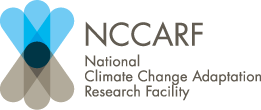You are here
Everything is connected: adaptation is no exception
Adapting to climate change can be daunting. You need to look at the big picture. And there are so many seemingly good reasons not to act. Researchers are developing tools that will help identify – and remove – barriers to effective action.
‘As soon as you look at adaptation you realise that everything is connected to everything.’
CSIRO’s Mark Stafford Smith says it’s important to identify links across council areas. ‘Any planner who doesn’t take an integrated view may find themselves fixing up one problem but becoming exposed to others elsewhere,’ he says.
Mark says climate change adaptation should be considered across the four broad categories of council business: in engineering works (for example along a coastal strip’s roads); in land-use planning (such as planning for flooding and bushfire risk); in social programs (including protecting the elderly from heat exposure); and in environmental services – where adaptation usually sits (for example in managing climate impacts on parks).
‘So you need to think about all of these wherever you are in Council,’ he says. ‘As a result, the whole picture can get complicated. But you can identify interactions across sectors, and identify investment needs, trade-offs and synergies.’
His colleagues at CSIRO have developed ways to see whether adaptation is prevented by people’s values and beliefs, because institutional arrangements are too complicated, or due to a lack of knowledge. The approach is called Enabling Adaptation Pathways. ‘Understanding the barriers to adaptation enables you to go into planning with eyes open so that you understand, for example, if values are the major constraint then providing more information won’t solve the problem.’
He also suggests councils should never underestimate how much community engagement is needed to bring people along.
How do you integrate your activities across functions, and across impacts? And how do you engage the community to arrive at decisions?
More information: Enabling Adaptation Pathways




